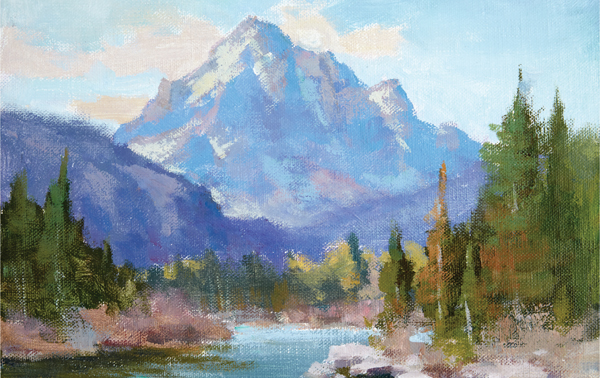
I fell in love with landscape painting when I was in my thirties. I was thrilled with the idea that I could create my own worlds. As happens with all artists, my early attempts were to copy photographs exactly. I erroneously thought that if I could copy nature from a good photo, I would end up with a successful painting. I chose the most outstanding scenes, set my studio up and started to paint… but it just was not working. I said to myself, “This doesn’t look right. I don’t like what I am painting. “
For years, I battled to get the answers to what it took to paint successful landscapes. I went to several instructors, got a few tips here and there, but nothing that could really make a big enough impact in my artwork. I remember promising myself, “If I ever get good at this, I will share everything so others won’t have to go through the same frustration”.
After reading countless books and carefully observing top artists’ work, I started to see patterns that they all repeated in their artwork. So I back engineered their paintings and figured out the commonality in their compositions. This is when I began to apply a science to my process, and my paintings started to click. I won the top award in a nationwide contest in Mexico and began to sell many paintings.
A few years later, I joined WetCanvas, an art focused social network where people share their paintings and tips. I remembered my promise and offered help and advice to other artists seeking answers. Eventually, I was recognized by the publishers of this book, who named me a Master Painter. They approached me to teach live online classes and workshops that would reach out to even more artists.
Since then, I have taught over 15,000 artists, including professionals. These classes enabled me to verbalize in simple understandable terms the science of beauty in landscape painting, and much of it is now being revealed in this book. I part with this notion, I don’t believe in ugly paintings because it is a human expression, but I do believe one should pursue venues to make them more beautiful.

The Teton
Open acrylics on linen glued to masonite board, 8" × 10" (20cm × 25cm)